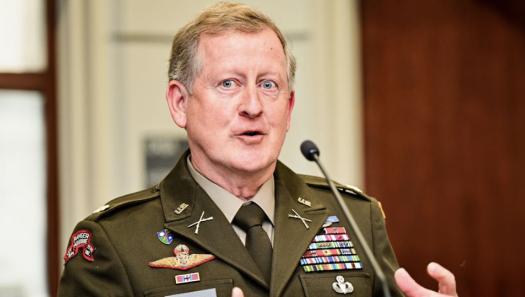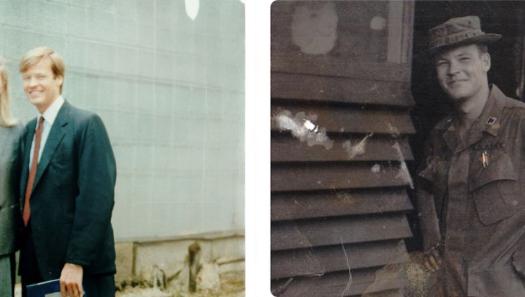Military & Veterans News
Vet News: Army Announces its Largest Repositioning Plan Since 1939
Sgt. Sara Wood, American Forces Press Service
WASHINGTON, July 27, 2005 – The Army announced its plans today for repositioning its forces to accommodate a new modular structure, which includes transferring more than 50,000 soldiers to the United States by the decade’s end.
This repositioning, the largest since 1939, is in conjunction with the Army’s creation of modular brigade combat teams, which are replacing Cold-War era brigade structures, said Gen. Richard Cody, Army vice chief of staff.
In a Pentagon press briefing today, Cody outlined the positioning of the BCTs and what effect that will have on installations, units and families. The most significant force structure change will be the transfer of more than 50,000 soldiers from overseas locations to the United States by the end of the decade. Most of these forces will come from Europe, Cody explained, with the 1st Infantry Division returning to Fort Riley, Kan., and the 1st Armored Division relocating to Fort Bliss, Texas. Both divisions are now based in Germany.
Fort Bliss will see the largest increase in troops, gaining about 20,000 between 2006 and 2009, said Ray DuBois, special assistant to the secretary of the Army. In addition to the 1st AD soldiers being restationed there, the 1st Cavalry Division is building a new brigade that will join the 1st AD after a deployment to Iraq.
Fort Bliss will see the biggest growth in troop numbers because it has 1.2 million acres of maneuver areas - 40 percent of the Army’s total -- that are not being used to their full potential, Cody said. With the new structure, those training areas will be optimized to increase readiness.
Another notable change will be at Fort Carson, Colo., which will gain two brigades of the 4th Infantry Division and the 2nd Brigade of the 2nd Infantry Division, which is redeploying from Iraq. The 2nd Brigade, formerly in Korea, will be redesignated as part of the 4th ID. Including the one 4th ID brigade already there, this will give Fort Carson a total of four 4th ID brigades.
New BCTs will be formed at Fort Drum, N.Y.; Fort Polk, La.; Fort Richardson, Alaska; Fort Bliss, Texas; Fort Riley, Kan.; Fort Knox, Ky.; and Fort Bragg, N.C. The brigade at Fort Richardson will be a Stryker brigade, and when it returns from an upcoming deployment, it will put on the patch of the 25th Infantry Division, Cody said. The 2nd Armored Cavalry Regiment also will be converted into a Stryker brigade and will be moved to Germany.
DuBois said the decisions about where to position the BCTs were based on three factors: Army modularity, the secretary of defense’s Integrated Global Presence and Basing Strategy and the recommendations of the Base Realignment and Closure Commission. The result of these changes will be a more expeditionary force better equipped to meet its obligations and fight the war on terror, Cody said. At the same time, these changes are being made with military families and quality of life in mind, he explained.
"This is really about the well-being of our soldiers and their families," he said, "to provide them stabilization and predictability."
These changes will provide stabilization because they will centralize a division at one location, enabling soldiers to stay at the same installation for four to five years, Cody said. He also stressed that moves will not be scheduled until the soldiers redeploy to their original location, ensuring that soldiers and families will move together.
The changes are complex, Cody said, but the essence is to realign the Army to where it needs to be to meet modern operational requirements.
"What this finally does for us is get the Army structure set to the realities of the 21st century," he said.
The Army is moving from a division-centric force to a brigade-centric one, DuBois explained, and that gives the opportunity for units from different divisions to be mixed and matched for deployments. As a result, whole installations won’t be left empty when a division deploys, he said.
In total, the number of BCTs in the Army will increase from 33 to 43 and will be spread throughout the United States and Europe, DuBois said. These BCTs will be categorized into three types: Stryker, heavy and light. Some will be re-patched and some re-stationed, but they will all maintain their unit heraldry and lineage, he said.
Ninety percent of these changes will be done by 2007, Cody said, with Fort Bliss being the last base to be finished.
SOURCE: VNIS - American Forces Press Service


